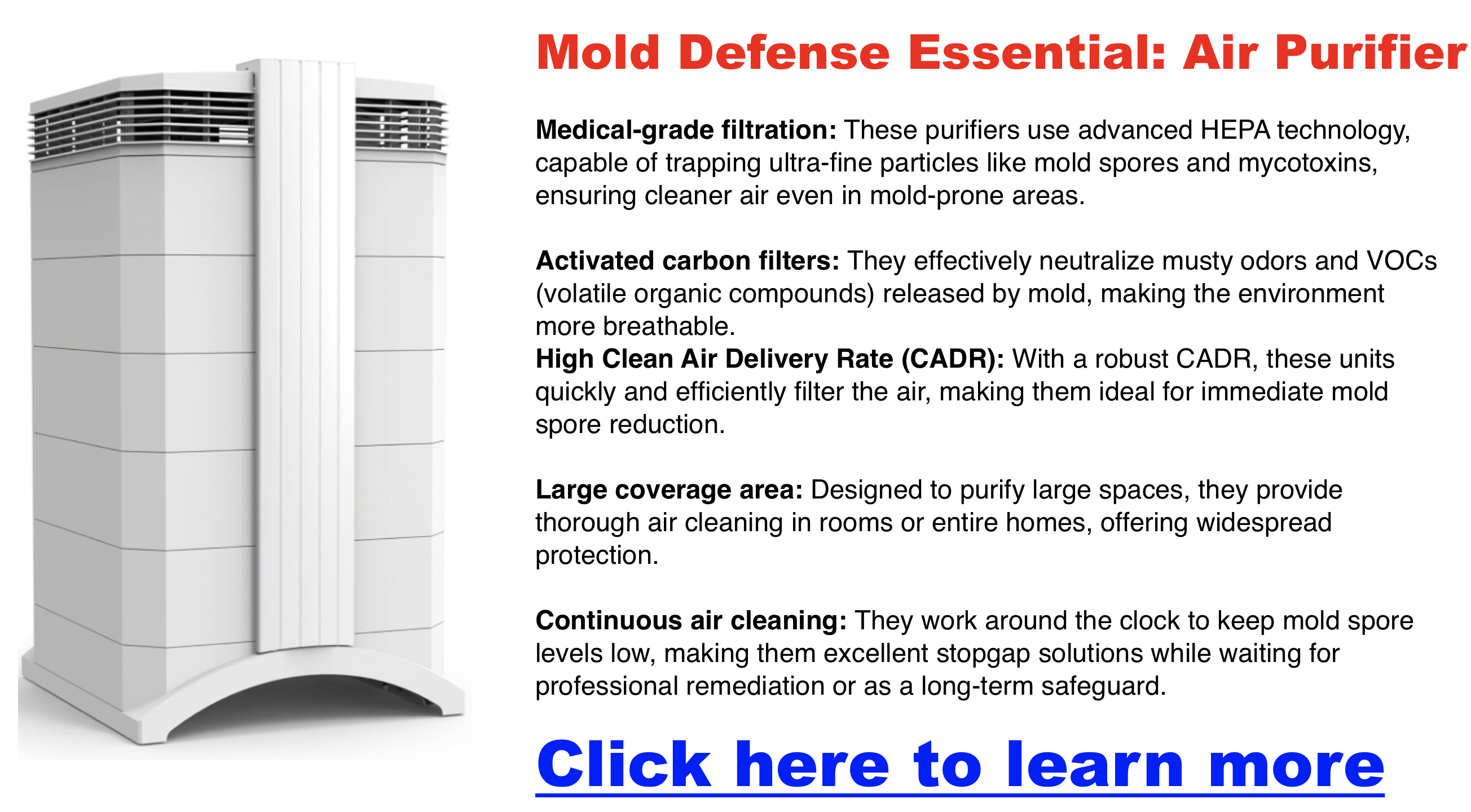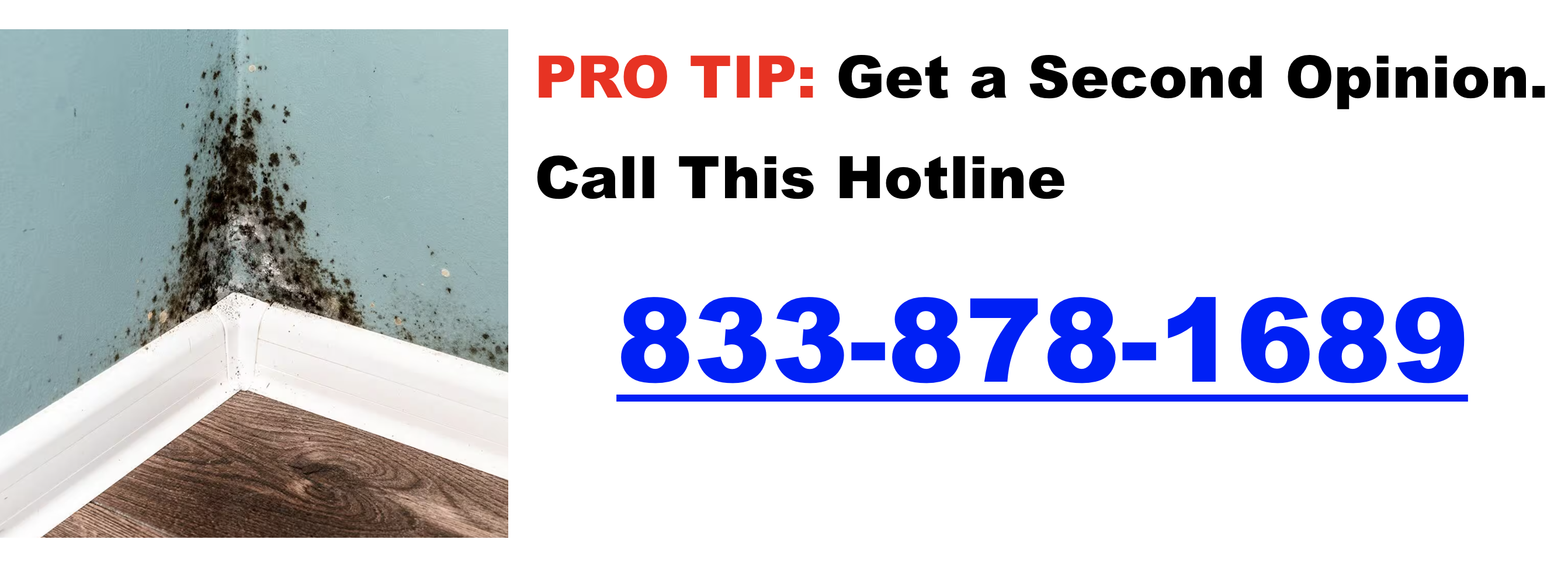What Causes Black Mold & How To Remove It
“Black mold” is a general term often used to describe any type of mold that appears black. Many molds can appear black, but most people are concerned about Stachybotrys chartarum. This type of mold can produce toxins that may cause health problems. However, any mold growth indoors is a potential problem and should be addressed.
Top Products To Remove Black Mold
Click here for my favorite mold removal product
| Product/Method | Type | Features | Application |
|---|---|---|---|
| MMR Mold Stain Remover | Commercial | Commercial-grade, removes mold stains quickly, covers 175-250 sq ft per gallon | Apply directly to surfaces like concrete, wood, drywall |
| RMR-86 | Commercial | High concentration of bleach, rapid mold stain removal, strong fumes | Spray on moldy areas, use with caution |
| Concrobium Mold Control | Commercial | Non-toxic, kills active mold growth, prevents regrowth, bleach-free | Apply to affected areas, safe for indoor use |
| White Distilled Vinegar | Natural/DIY | Inexpensive, environmentally friendly, kills mold effectively | Spray full strength on moldy areas, let sit before wiping |
| Hydrogen Peroxide-Based Cleaners | Natural/DIY | Causes bubbling and fizzing action, releases pure oxygen | Apply to mold and let it react before cleaning |
Identifying Black Mold
- Appearance: Look for dark green, gray, or black patches with a slimy or fuzzy texture.
- Location: Common areas include bathrooms, kitchens, basements, and anywhere with moisture problems.
- Smell: A musty, earthy odor often indicates mold presence.
Health Risks
- Respiratory problems: Coughing, wheezing, shortness of breath
- Allergies: Sneezing, runny nose, itchy eyes
- Headaches and fatigue
- Skin irritation
- In severe cases, more serious health problems
What Causes Black Mold?
Black mold thrives in environments with high moisture and poor ventilation. Understanding the root causes of black mold is key to preventing its growth and spread.
Here are the most common factors that lead to black mold infestations:
Water Leaks
- Plumbing leaks: Leaks from pipes under sinks, behind walls, or in ceilings are common culprits. Even small drips can lead to moisture buildup over time, creating the perfect mold environment.
- Roof leaks: Water can seep through damaged roofs and accumulate in attics or ceilings, encouraging mold growth. Roof leaks often go unnoticed until the mold has already spread.
- Appliance leaks: Dishwashers, washing machines, or refrigerators with leaky hoses can create moist spots where mold can thrive.
Flooding or Water Damage
- After a flood or severe water damage, black mold can grow rapidly within 24 to 48 hours if the affected areas aren’t dried out quickly. Basements and crawl spaces, which often remain damp after flooding, are particularly vulnerable to mold infestations.
Condensation
- Cold surfaces such as windows, metal pipes, or poorly insulated walls can cause condensation to form, creating moisture.
- Humidity: High indoor humidity levels (over 50%) can cause condensation and dampness, especially in areas like bathrooms, kitchens, and basements.
Poor Ventilation
- Insufficient airflow in a room can trap moisture, particularly in bathrooms, kitchens, basements, and attics. Poorly ventilated rooms stay humid longer, providing an ideal breeding ground for black mold. For example, showers or cooking without proper ventilation can grow mold in walls and ceilings.
Damp Building Materials
- Materials like drywall, wood, and insulation are highly absorbent and hold moisture for extended periods, creating a conducive environment for black mold. This often happens after water damage or when construction materials are exposed to moisture during building or renovation work.
Inadequate Home Maintenance
- Blocked gutters: Clogged or broken gutters can cause water to overflow, seeping water into walls or foundations, leading to moisture buildup and mold growth.
- Foundation cracks: Water can seep into a home through cracks or holes in the foundation or basement walls, increasing moisture levels and encouraging mold growth.
- Window seals: Damaged or worn window seals can allow rainwater to leak into walls, leading to moisture and mold over time.
High Humidity Areas
- Homes located in humid climates or near bodies of water are more prone to mold growth. Without proper humidity control inside, black mold can easily form on walls, ceilings, or even furniture.
Methods for Killing Black Mold
Bleach
Bleach is often used to clean black mold stains, but it’s only effective on non-porous surfaces like tiles or countertops. While it can remove the visible mold, it does not kill the fungus’s deeper roots (called hyphae), which can regrow. To be thorough, follow up bleach treatments with a biocidal cleaner.
Biocidal Cleaners
Biocidal cleaners are designed to penetrate deep into porous surfaces and kill mold at its roots. They are particularly effective for treating mold on drywall, wood, and other absorbent materials. Products like RMR-141 can disinfect and prevent mold from coming back.
Baking Soda and Vinegar (Natural Solutions)
For those looking for a natural option, a mixture of baking soda, distilled white vinegar, and water can be an effective cleaner. Spray on the affected area, scrub gently, and allow it to dry. This solution helps kill mold and deodorize the area.
Chemical-Based Mold Removers
Products specifically designed for mold and mildew, such as Mold Armor, are highly effective at killing mold and preventing its return.
Best Black Mold Removal Products
- RMR-141: This EPA-registered disinfectant is a powerful fungicide and virucide that kills mold and prevents regrowth.
- Concrobium Mold Control: This product crushes mold spores, preventing future growth without harsh chemicals.
- Mold Armor: Known for its fast action, this product kills mold in as little as one minute, making it a quick and effective solution for serious infestations.
- White Vinegar: A natural, environmentally-friendly option that can kill up to 82% of mold species.
Step-by-Step Guide to Safely Removing Black Mold
- Preparation
- Seal off the affected room to prevent the mold spores from spreading. They are airborne and can float to other parts of the home.
- Set up a HEPA filter to clean the air in the room.
- Wear a N95 respirator, gloves, and goggles to protect yourself from mold exposure.
- Cleaning the Mold
- Spray the mold with your chosen cleaning solution (bleach, vinegar, biocidal cleaner, etc.).
- Scrub the area thoroughly to remove visible mold.
- Follow up with a deeper penetrating treatment like a biocidal cleaner for stubborn or porous surfaces.
- Post-Cleaning
- Once the mold is removed, dry the area completely to prevent moisture from accumulating.
- Use a dehumidifier or improve ventilation to lower humidity levels in the room.
- Apply mold-resistant paint if necessary, especially in areas prone to dampness, like bathrooms and basements.
Preventing Mold from Returning
Click here to speak to a mold specialist
Improve Ventilation
Proper ventilation is key in areas like bathrooms and kitchens. Installing exhaust fans and opening windows when possible can reduce moisture buildup and help prevent mold growth.
Control Moisture
Keep indoor humidity below 50%, which can be done using a dehumidifier. Regularly check for and repair any leaks, especially around sinks, tubs, and pipes.
Preventative Treatments
Applying mold-resistant paints and coatings in vulnerable areas can stop mold before it starts. These products create a barrier that makes it harder for mold to grow on treated surfaces.
Common Mistakes to Avoid in Mold Removal
Painting Over Mold
One common mistake is trying to paint over mold. This does not kill the mold and only temporarily covers up the problem. The mold will grow underneath the paint, eventually showing through again. Always remove the mold completely before painting, and consider using mold-resistant paint in areas prone to moisture.
Using Ineffective Cleaners
General-purpose cleaners, bleach, or soap are often used to clean mold, but they may not be sufficient. Bleach can clean the surface but doesn’t kill the mold’s deeper roots, meaning it can quickly return. Specialized mold removal products are more effective.
Ignoring Safety Precautions
Mold spores can easily be inhaled, so wearing protective gear is essential. This includes a respirator to filter out mold spores, gloves to protect your skin, and goggles to protect your eyes.
Important Considerations:
- Porous Materials: Mold can penetrate porous materials like drywall and carpet. These may need to be replaced.
- Professional Help: For large infestations or if you have health concerns, consult a professional mold remediation specialist.
- Why Your Septic Tank Smells When It Rains (and What to Do About It)
- How to Handle Water-Damaged Wood in Your Home or Business
- How to Prevent and Remove Mold from Pillows: A Complete Guide
- Why Is My Carpet Always Wet? A Step-by-Step Guide to Identifying the Source of Moisture
- Signs of Septic System Failure and What It Means for Your Basement




